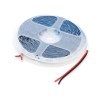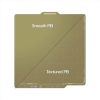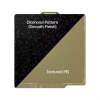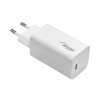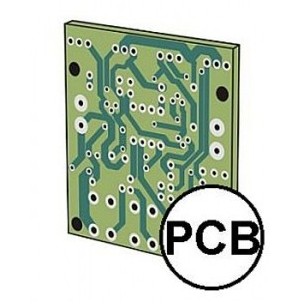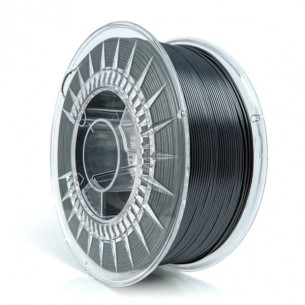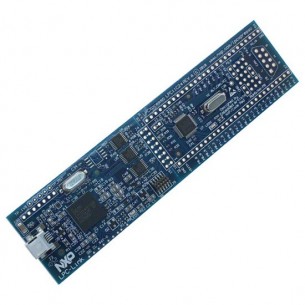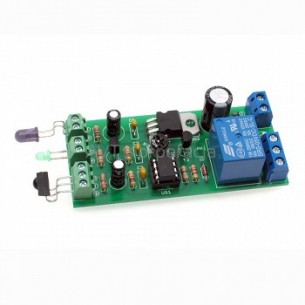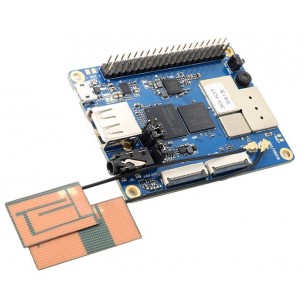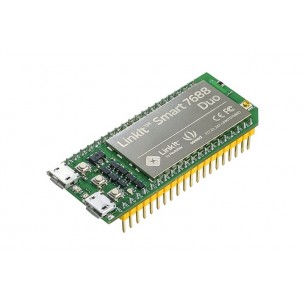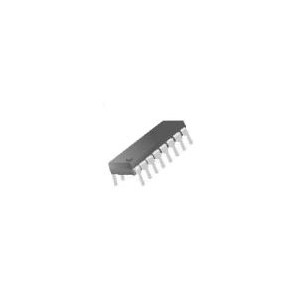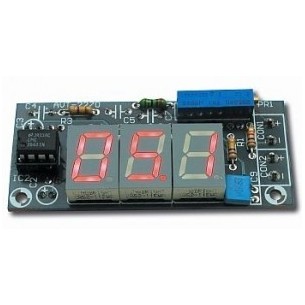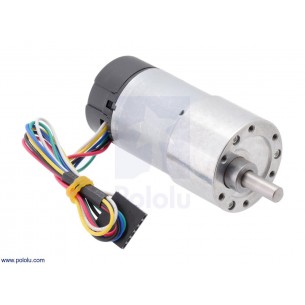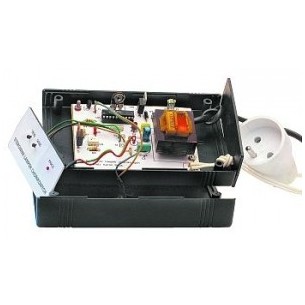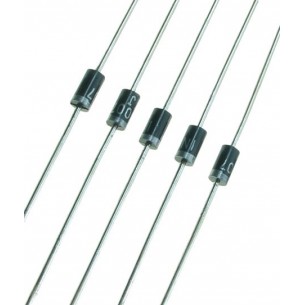- Obecnie brak na stanie
- Kategorie główne
-
- ARDUINO
- AUTOMATYKA
- CYBERBEZPIECZEŃSTWO
- DRUK 3D
- EDUKACJA
- ELEKTRONIKA
- Akcesoria PC
- Chłodzenie
- Czujniki
- Czujniki 6DOF/9DOF/10DOF
- Czujniki ciśnienia
- Czujniki gazów
- Czujniki Halla
- Czujniki jakości cieczy
- Czujniki jakości powietrza
- Czujniki magnetyczne (kompasy)
- Czujniki medyczne
- Czujniki nacisku
- Czujniki odbiciowe
- Czujniki odległości
- Czujniki PH
- Czujniki podczerwieni
- Czujniki poziomu cieczy
- Czujniki położenia
- Czujniki prądu
- Czujniki przepływu
- Czujniki przyspieszenia (akcelerometry)
- Czujniki ruchu
- Czujniki światła i koloru
- Czujniki temperatury
- Czujniki wibracji
- Czujniki wilgotności gleby
- Czujniki wilgotności powietrza
- Żyroskopy
- Drukarki
- Elementy pasywne
- Gadżety
- GPS
- Inteligentne ubrania
- Kamery i akcesoria
- Karty pamięci i inne nośniki danych
- Komunikacja
- LED - diody, wyświetlacze, paski
- Materiały przewodzące
- Moduły elektroniczne
- Akcesoria JTAG
- Audio
- Czytniki kart pamięci
- Czytniki kodów paskowych
- Czytniki linii papilarnych
- Ekspandery linii I/O
- Enkodery
- Generatory DDS/PLL
- Klawiatury, przyciski
- Konwertery CAN
- Konwertery napięć
- Konwertery RS485
- Konwertery USB - I2C / 1-Wire / SPI
- Konwertery USB - UART / RS232
- Moduły HMI
- Moduły pamięci
- Moduły RTC
- Moduły z wyjściami mocy
- Moduły zasilające
- Obraz i wideo
- Odbiorniki podczerwieni TSOP
- Potencjometry cyfrowe
- Przetworniki A/C i C/A
- Rejestratory danych (data logger)
- Sterowniki LED
- Sterowniki serw
- Sterowniki silników
- Półprzewodniki
- Button
- Czujniki
- Czujniki dotykowe (Touch)
- Diody
- Energy harvesting
- Generatory PLL
- Inne
- Konwertery logiczne
- Liczniki energii
- Mikrokontrolery
- Mikroprocesory DSP
- Mostki prostownicze
- Optotriaki i transoptory
- Pamięci
- Przetworniki a/c (ADC)
- Przetworniki c/a (DAC)
- Sterowniki i mostki IGBT
- Sterowniki LED
- Sterowniki silników
- Syntezery DDS
- Timery
- Tranzystory
- Układy analogowe
- Układy audio
- Układy cyfrowe
- Układy interfejsowe
- Układy programowalne
- Układy RF
- Układy RTC
- Układy SoC
- Układy zasilające
- Układy zerujące
- Zabezpieczenia ESD
- Przekaźniki
- Przetworniki dźwięku
- Przewody
- Przewody świecące i akcesoria
- Przełączniki i przyciski
- Płytki prototypowe
- Wizja maszynowa (MV)
- Wyświetlacze
- Złącza
- Adaptery USB PD do laptopów
- Gniazda do kart pamięci
- Igły testowe (pogo pin)
- Konektory
- Podstawki
- Szybkozłącza
- Zworki
- Złącza ARK (Terminal Block)
- Złącza FFC / FPC ZIF
- Złącza goldpin
- Złącza IDC
- Złącza inne
- Złącza Jack
- Złącza JST
- Złącza koncentryczne (RF)
- Złącza krokodylkowe
- Złącza obrotowe
- Złącza RJ-45
- Złącza szufladowe D-Sub
- Złącza USB
- Złącza zasilania DC
- Akcesoria PC
- KSIĄŻKI
- MECHANIKA
- MINIKOMPUTERY (SBC)
- PRZYRZĄDY POMIAROWE
- RASPBERRY PI
- Akcesoria do Raspberry Pi
- Chłodzenie do Raspberry Pi
- Kamery do Raspberry Pi
- Karty pamięci do Raspberry Pi
- Moduły rozszerzające do Raspberry Pi
- Obudowy do Raspberry Pi
- Prototypowanie Raspberry Pi
- Przewody audio-wideo do Raspberry Pi
- Raspberry Pi 3 model A+
- Raspberry Pi 3 model B
- Raspberry Pi 3 model B+
- Raspberry Pi 4 model B
- Raspberry Pi 400
- Raspberry Pi 5
- Raspberry Pi 500
- Raspberry Pi Compute Module
- Raspberry Pi model A/B+/2
- Raspberry Pi Pico
- Raspberry Pi Zero
- Raspberry Pi Zero 2 W
- Wyświetlacze do Raspberry Pi
- Zasilanie do Raspberry Pi
- WARSZTAT
- Chemia
- Alkohol izopropylowy (IPA)
- Farby i lakiery przewodzące
- Gaz do zapalniczek i palników
- Pasty i kleje termoprzewodzące
- Smary, oleje
- Sprężone powietrze
- Środki czyszczące i konserwujące
- Środki do czyszczenia PCB
- Środki do zabezpieczania elektroniki
- Termopady - taśmy termoprzewodzące
- Woda destylowana
- Wytrawiacze
- Zamrażacze
- Zmywacze etykiet
- Elektronarzędzia
- Igły dozownicze
- Imadła
- Klejarki
- Kleje
- Listwy zasilające
- Lutowanie
- Akcesoria do lutowania
- Akcesoria SMD
- Chemia lutownicza
- Cyna
- Gąbki i czyściki
- Groty do lutownic
- Grzałki oraz kolby lutownicze
- Kulki BGA
- Laminaty
- Lutownice kolbowe
- Lutownice przenośne
- Maty i akcesoria antystatyczne (ESD)
- Myjki ultradźwiękowe
- Odsysacze do usuwania cyny
- Opalarki
- Pasty lutownicze
- Pędzle i szczotki ESD
- Plecionki do usuwania cyny
- Podgrzewacze
- Podstawki pod lutownice
- Silikonowe maty do lutowania
- Stacje lutownicze
- Tygle lutownicze
- Uchwyty, lupy
- Mikroskopy
- Miniwiertarki, miniszlifierki
- Narzędzia
- Noże
- Nożyczki
- Okulary ochronne
- Organizery
- Pęsety
- Plotery i Frezarki CNC
- Rurki termokurczliwe
- Ściągacze izolacji
- Taśmy
- Zaciskarki
- Zasilacze laboratoryjne
- Chemia
- WYCOFANE Z OFERTY
- WYPRZEDAŻ
- ZASILANIE
- ZESTAWY URUCHOMIENIOWE
- Atmel SAM
- Atmel Xplain
- AVR
- DFRobot FireBeetle
- ESP32
- ESP8266
- Feather / Thing Plus
- Freedom (Kinetis)
- Google Coral
- Inne zestawy uruchomieniowe
- M5Stack
- micro:bit
- Moduły peryferyjne
- Nordic nRF
- OPROGRAMOWANIE
- Particle Photon
- PIC
- Programatory Segger
- Programatory uniwersalne
- Raspberry Pi RP2040
- RFID
- RISC-V
- Seeed Studio LinkIt
- Sparkfun MicroMod
- STM32
- STM32 Discovery
- STM32 MP1
- STM32 Nucleo
- STM8
- Teensy
- WRTNode
- XIAO/Qt PY
- Atmel SAM
- ZESTAWY URUCHOMIENIOWE FPGA
- ARDUINO
Nowości
Nowości
Pololu IR Beacon Development Board
The IR beacon development board is just an assembled IR Beacon PCB with no IR sensors or firmware. This item is intended for advanced users who want to customize their IR beacon functionality by writing their own firmware. No documentation is shipped with this IR Beacon Development kit.
 |
Pololu’s new IR beacon (infrared beacon) is an updated version of our original IR beacon. Like the original unit, the devices are transceivers meant to be used in pairs to give robots a simple means for detecting each other. You can use the beacons to build pairs of robots that interact or chase one another, or to make a robot that can identify and return to a home base. For example, you could build a “cat robot” and “mouse robot” that each have an IR beacon, where the cat chases the mouse and the mouse runs away from the cat. The beacons are ideal for autonomous robot contests in which robots compete in pairs, such as MIT’s annual 6.270 autonomous robot design competition, where our original beacons were used for several years.
 |
The new IR beacons feature round PCBs with six wide-angle emitters to provide uniform broadcasting in all directions. The operating voltage range has increased to 6 – 16 V, and on-board voltage monitoring enables a more consistent output brightness over the voltage range. Most components are pre-assembled, so all you need to solder is the capacitor, connectors, and sensors (make sure you solder them in from the bottom of the PCB!).
Note: The Pololu IR beacon is a kit; before using it, you need to assemble the beacon by soldering its components onto its circuit board. To use the kit in robotics projects, you need to connect it to your own robot controller. Please note that the IR beacons only work in pairs and that certain kinds of artificial lighting (e.g. some fluorescent lights) can interfere with the sensors.
Device Specifications
- PCB size: 1.35" circle
- IR modulation frequency: 56 kHz
- Output refresh rate 20 Hz
- Detection range: 6 inches to 20 feet
- Supply voltage: 6-16 V
- Data voltage: 5 V
- Number of IR detectors: 4
How the IR Beacons Work
(The following animations show the old IR beacon, but the operating principle is the same in the new, round units.)
The beacons work by transmitting and detecting infrared light, much like a television remote control. Each beacon has four IR emitters and four IR detectors. The beacons alternate between transmitting and receiving so that they never get confused by reflections of their own transmissions.
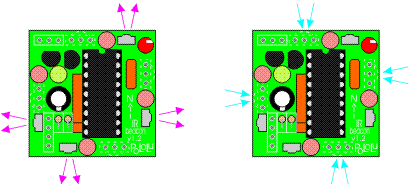 |
The transmit and detect cycle is carried out more than one thousand times per second, and a small microcontroller monitors all four detectors to decide the direction to the other beacon. The beacons have four red LEDs that indicate the direction to the other beacon; if you take two beacons and rotate them, the LEDs will always keep lighting up in the direction of the other beacon.
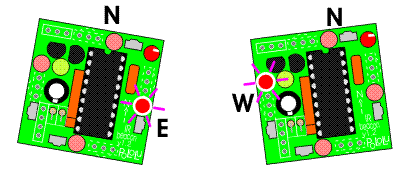 |
Interfacing to the beacon is simple — it has four digital outputs that indicate which of its four sides detects the other beacon the strongest. You can establish the direction to another beacon to within a few degrees by rotating the beacon back and forth and noting the point where the output switches from one side to another. An enable input lets you select between active mode and a low-power mode.
IR Beacon Development Kit (Transmit-Only Beacon)
In response to customer requests, the IR beacon is available as just an assembled PCB with no IR sensors or firmware. This item is intended for advanced users who want to customize their IR beacon functionality by writing their own firmware. The main processor is a Microchip PIC16F630, and the PCB includes a footprint for a 5-pin header compatible with the PIC kit 2 programmer. The IR Receiver Modules are available separately. The schematic is shown below and is the only documentation shipped with this IR Beacon Development kit:
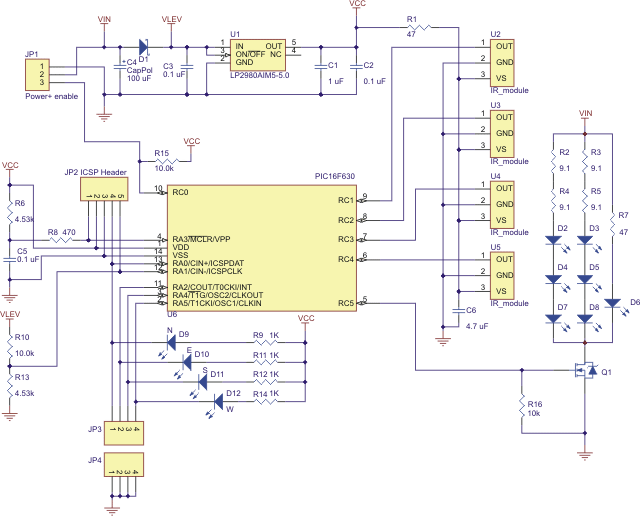 |
It is important to note that the IR beacon achieves its brighness by pulsing the IR LEDs with very high currents; turning on the IR LEDs continuously will burn them out. When testing the IR beacon, a digital camera can be useful in determining whether the IR LEDs are on. However, some cameras (usually more expensive ones) have better filters that block IR. In the picture below, a point-and-shoot camera shows the IR LEDs shining (in purple) but the DSLR with which the picture is taken does not show the LEDs.
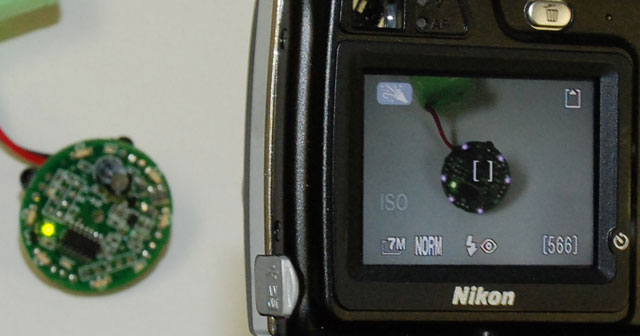 |
People often buy this product together with:
 |
Pololu IR Beacon Transceiver Pair |
 |
Vishay TSOP34156 IR detector module 56kHz |
Osoba odpowiedzialna BTC Korporacja sp. z o. o. Lwowska 5 05-120 Legionowo Polska sprzedaz@kamami.pl 22 767 36 20
Produkty z tej samej kategorii (16)
Brak towaru
Filament firmy ROSA3D wykonany z wysokiej jakości poliwęglanu z politereftalanem butylenu. Na szpuli nawinięty jest 1 kg filamentu o średnicy 1,75 mm. ROSA3D PC-PBT Black
Wycofany Brak towaru
Low-cost development platform with LPC11C24 microcontroller and LPC link on-board, NXP, RoHS
Wycofany Brak towaru
Brak towaru
Zestaw AVT do samodzielnego montażu czasowego włącznika zbliżeniowego. AVT1980 B
Wycofany Brak towaru
Minikomputer z 2-rdzeniowym procesorem MT6572 ARM Cortex-A7. Wyposażony w układ GPU Mali-400 MP1, 256 MB RAM i 512 MGB eMMC. Zestaw zapewnia WiFi, BT, FM, GPS oraz 3G. Orange Pi 3G-IOT-A
Wycofany Brak towaru
- Nail Gumerov, Ramani Duraiswami Wycofany
Brak towaru
Linklt Smart 7688 Duo to moduł IoT oparty na układzie MT7688 firmy MediaTek działający pod kontrolą dystrybucji systemu operacyjnego Linux wywodzącej się z OpenWrt, dodatkowo wyposażony jest w mikrokontroler ATmega32U4, dzięki temu możliwe jest uruchamianie aplikacji Arduino przeznaczonych dla Arduino Yun. Seeed Studio 102110017
Wycofany Brak towaru
- Akira Chiba, Tadashi Fukao, Osamu Ichikawa, Masahide Oshima, Masatugu Takemoto, David Dorrell Wycofany
Brak towaru
Brak towaru
Brak towaru
Obudowa do Banana Pi M3, M2 Ultra oraz M64 przezroczysta, wykonana z akrylu. Obudowa składana jest na zatrzaski bez użycia kleju. Odpowiednio przygotowane otwory pozwalają na korzystanie z wszystkich gniazd w jakie wyposażony jest Banana Pi M3
Wycofany Brak towaru
Silnik firmy Pololu z enkoderem 64 CPR, z przekładnią 30:1, standardowym napięciem pracy 12 V i prędkością 350 rpm. Pololu 2823
Wycofany Brak towaru
MIKROPROCESOROWY STEROWNIK LAMPEK CHOINKOWYCH - ZESTAW DO SAMODZIELNEGO MONTAŻU
Wycofany Brak towaru
Dioda prostownicza Schottky, THT, 40V, 1A, DO-41, LGE, RoHS
Wycofany Brak towaru
Brak towaru
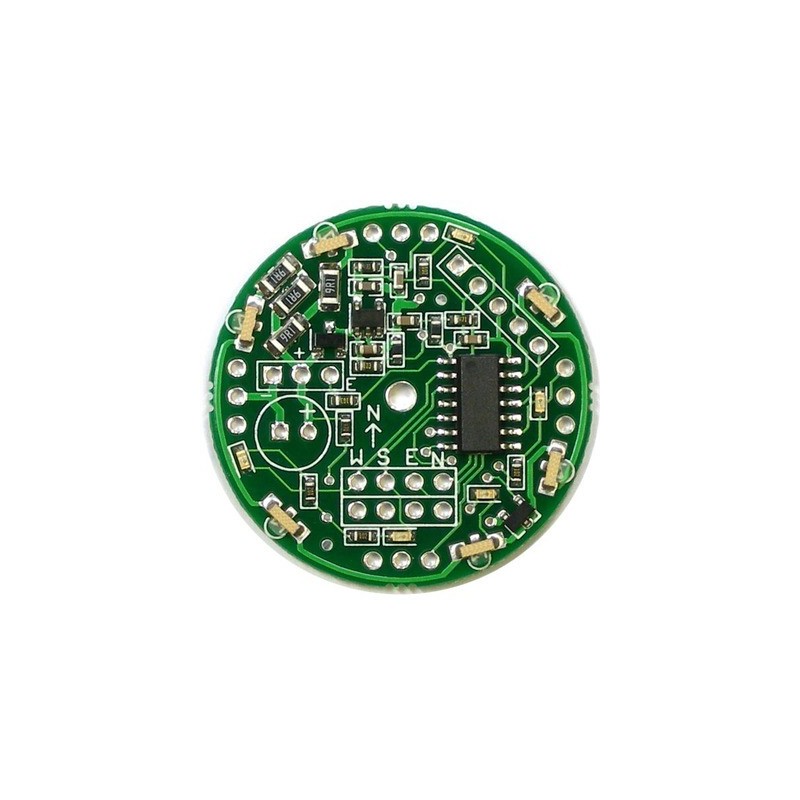
Pololu IR Beacon Development Board





